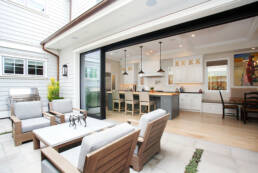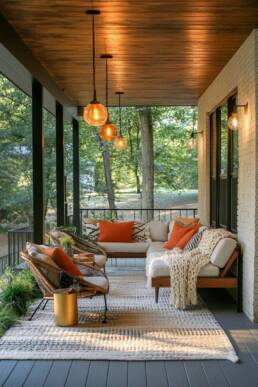Why Social Well-Being Matters in Residential Design
In today’s fast-paced world, residential design has a profound impact on how people live, connect, and thrive. The way we shape our living environments plays a vital role in nurturing social interactions, strengthening community bonds, and fostering a deep sense of belonging. By prioritizing social well-being in single-family residential design, we can create homes that contribute to stronger relationships and more fulfilling lifestyles.
What is Social Well-Being in Residential Design?
Social well-being refers to the quality of relationships, level of community engagement, and an individual’s sense of connection within their environment. Because human beings are inherently social, the design of their homes can either support or hinder these interactions.
In the context of residential design, especially single-family homes, this means creating environments that:
- Encourage meaningful family interactions
- Support social gatherings and entertainment
- Foster connection with the broader community
When social well-being is integrated into residential design, the result is a healthier, more emotionally resilient, and socially connected lifestyle.
Residential Design Strategies to Encourage Family Interactions
The foundation of every home lies in how it brings people together. By integrating communal spaces that are functional and welcoming, residential designers can significantly enhance everyday social dynamics within the home.
- Design with Purpose: Start by identifying the function of each shared space. Whether it’s for dining, playing, or relaxing, clearly defining the purpose helps guide effective residential design decisions tailored to the family’s lifestyle.
- Use Open-Concept Layouts: Open-concept design allows fluid communication between the kitchen, dining, and living areas. Removing physical barriers helps create a seamless, interactive environment ideal for family engagement—a staple of modern residential design. Take a look at The Ultimate Guide to Open Concept Living for more information.
- Balance Shared and Private Zones: A well-zoned home provides space for togetherness and solitude. Successful residential design accommodates both needs, supporting social well-being without compromising individual privacy.
Residential Design Tips for Hosting and Social Gatherings
A well-designed home doesn’t just accommodate its residents—it welcomes others, too. The right layout can set the tone for enjoyable and memorable gatherings.
- Centralized Kitchens with Social Islands: The kitchen is often the social heart of the home. In residential design, incorporating a large island with seating encourages conversation and collaboration during meals and events.
- Flexible, Multipurpose Living Areas: Designing flexible spaces that adapt to various activities makes homes more functional. Movable furniture, modular layouts, and tech-friendly zones allow spaces to evolve with changing needs.
- Integrated Indoor-Outdoor Living: One of the hallmarks of contemporary residential design is a smooth transition between indoor and outdoor areas. Sliding doors, decks, and outdoor kitchens expand hosting opportunities and connect residents with nature.
- Comfortable, Social Furniture Layouts: Arrange seating to encourage face-to-face conversations. Grouping chairs in circular formations and providing ample, comfortable seating is essential to designing homes that invite social interaction.
Residential Design That Builds Community Connections
Great residential design doesn’t end at the property line. It extends into the surrounding community, encouraging engagement with neighbors and enhancing overall well-being.
- Embrace the Front Porch Culture: Front porches serve as welcoming zones where private and public life intersect. Positioned toward the street or communal green spaces, porches invite casual interactions that build trust and connection.
- Design an Approachable Front Yard: Create a front yard that feels open and inviting. Use low fences, benches, or friendly landscaping to increase visibility and make it easier to engage with passersby.
- Use Outdoor Areas for Community Building: Outdoor spaces designed for gatherings—like fire pits, communal gardens, or seating areas—enhance both family bonding and neighborly connections. These spaces are essential components of community-conscious residential design.
Future Trends in Residential Design for Social Well-Being
- Intergenerational Living Models: Modern residential design is increasingly adapting to multigenerational households. Thoughtfully designed spaces promote interaction while respecting privacy—supporting both aging parents and younger generations under one roof.
- Co-Living and Shared Amenities: Shared housing models blend private quarters with communal areas, offering affordability and a built-in sense of community. These emerging trends represent a shift in residential design toward greater social integration and connection.
Designing for Connection and Community
Thoughtful residential design is about more than aesthetics—it’s about creating spaces that support meaningful relationships, foster community interaction, and promote emotional well-being. From open-concept layouts and flexible gathering spaces to front porches and outdoor social zones, the choices we make in design can significantly impact how we live and connect.
As our needs evolve, so too should our approach to residential design. By placing social well-being at the forefront, we can build not just houses—but homes and communities where people truly belong.




